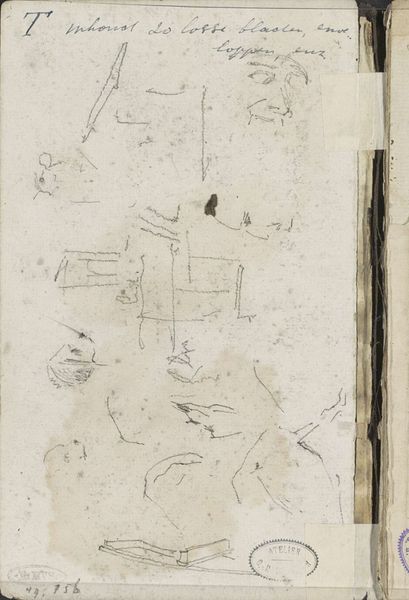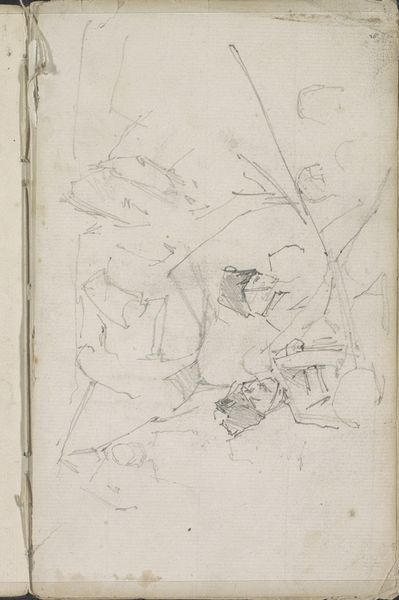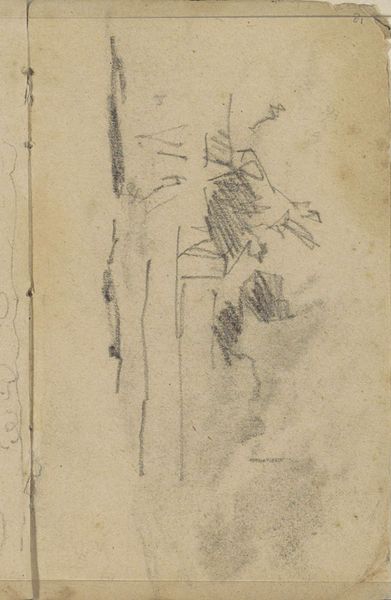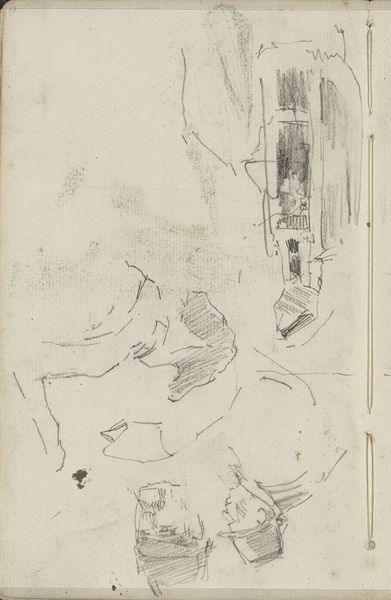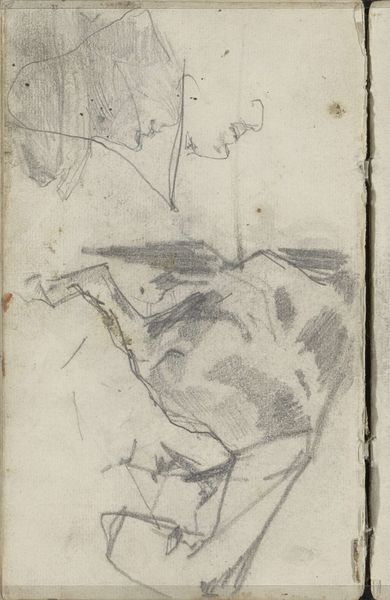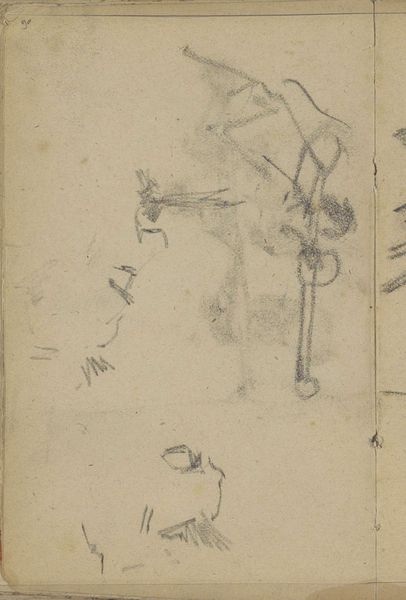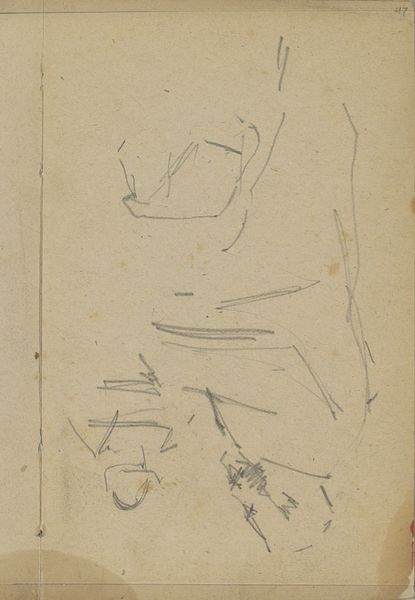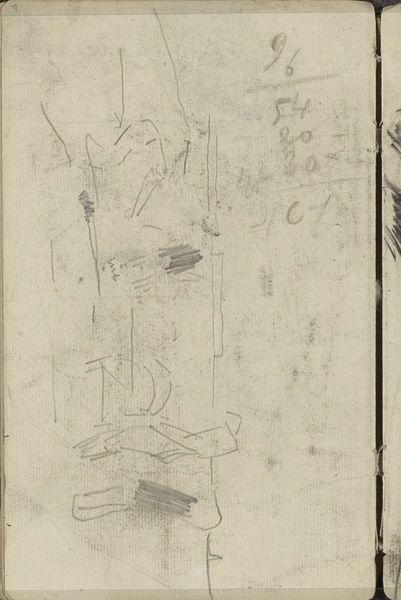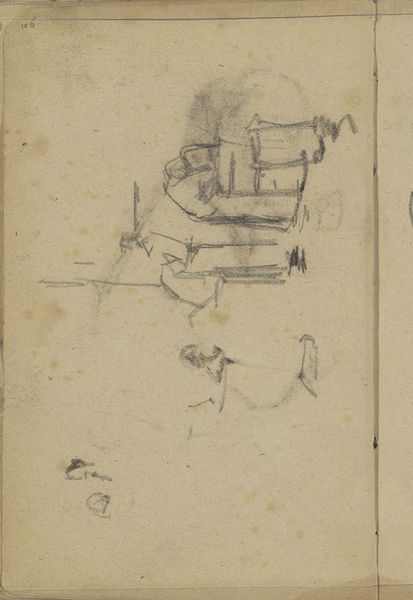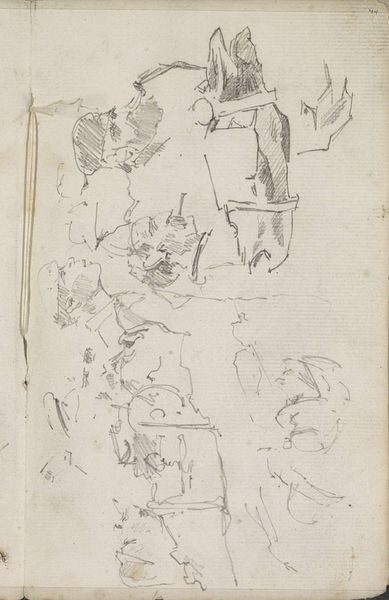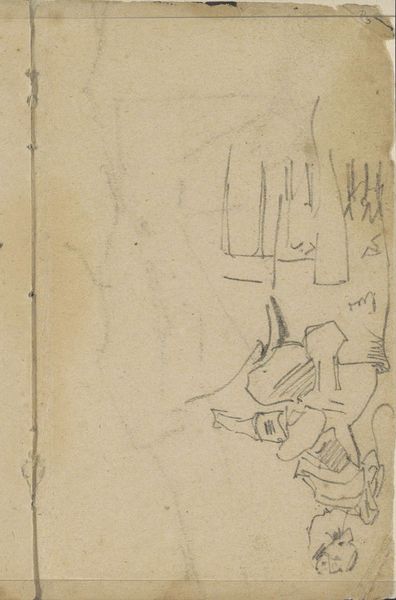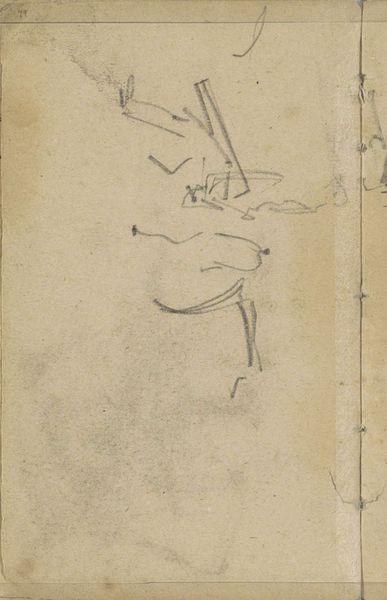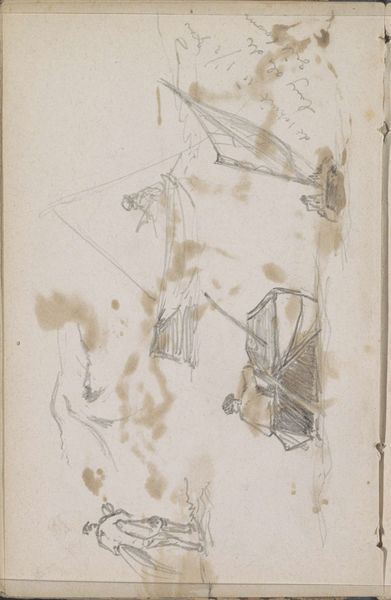
drawing, paper, pencil, graphite
#
drawing
#
figuration
#
paper
#
pencil
#
graphite
#
academic-art
Copyright: Rijks Museum: Open Domain
Editor: Here we have George Hendrik Breitner's "Study Sheet with Figures and a Construction," dating from between 1880 and 1882. It’s a graphite and pencil drawing on paper. The sketchiness almost gives it a sense of barely-there movement. What strikes you most about the composition of this work? Curator: The immediate effect lies in its fragmentary nature. The forms, while representational, are delineated with an almost violent brevity. Note the stark contrasts in line weight – some barely registering, others boldly asserting themselves. It’s in these contrasts that we find the key to Breitner’s visual strategy. Editor: Visual strategy? Curator: Indeed. Consider how the hatching and cross-hatching serve not merely to define form, but also to generate a sense of spatial ambiguity. The “figures,” as you noted, are just barely present, almost dissolving into the background. Ask yourself what purpose this ambiguity might serve. Is Breitner attempting to capture a fleeting moment, a transient impression? Editor: So, the roughness isn't just a byproduct of it being a study, but actually contributes to the overall feeling? Curator: Precisely. It's the strategic deployment of these "rough" elements that elevates it beyond a mere study. The negative space is equally crucial. It’s not simply empty; it’s active, breathing life into the sketched forms. Does it not draw the eye to travel along the open, unmarked spaces to search the forms more carefully? Editor: I hadn't thought of the blank space that way before. Seeing the lines as weighted is useful, almost like they're having a conversation. Thanks! Curator: Of course. Thinking about the conversation helps see how what appears incomplete contains within it, the suggestion of far greater visual potentials.
Comments
No comments
Be the first to comment and join the conversation on the ultimate creative platform.
